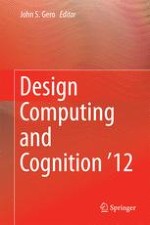2014 | OriginalPaper | Chapter
Understanding Analogical Reasoning in Biomimetic Design: An Inductive Approach
Authors : Hyunmin Cheong, Gregory Hallihan, L. H. Shu
Published in: Design Computing and Cognition '12
Publisher: Springer Netherlands
Activate our intelligent search to find suitable subject content or patents.
Select sections of text to find matching patents with Artificial Intelligence. powered by
Select sections of text to find additional relevant content using AI-assisted search. powered by
